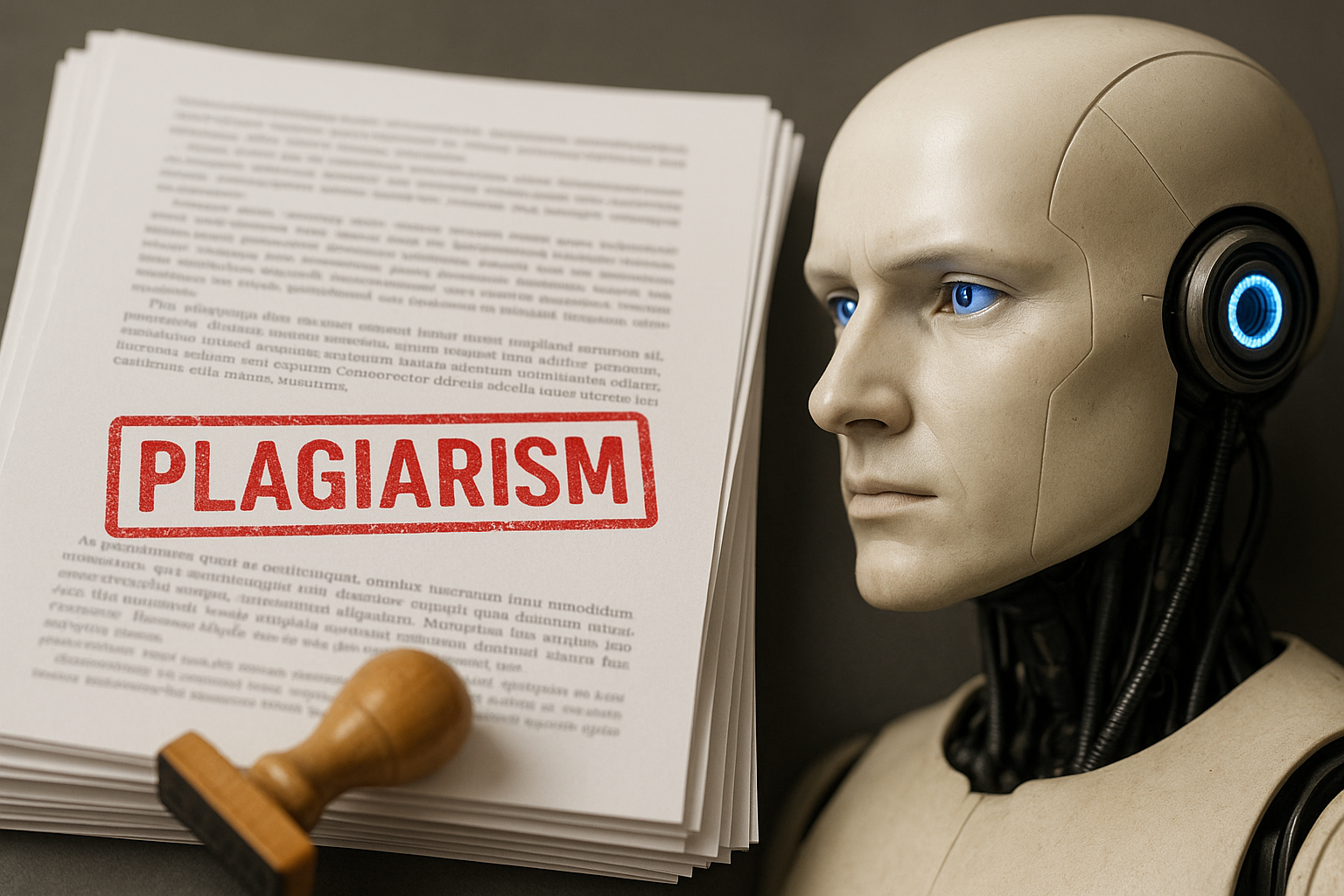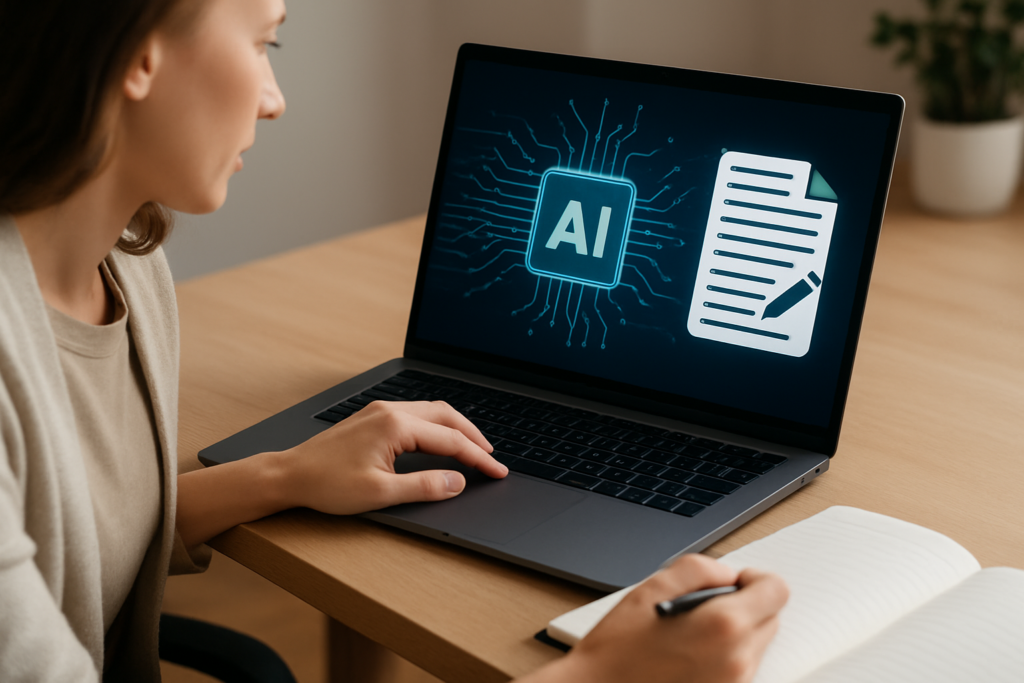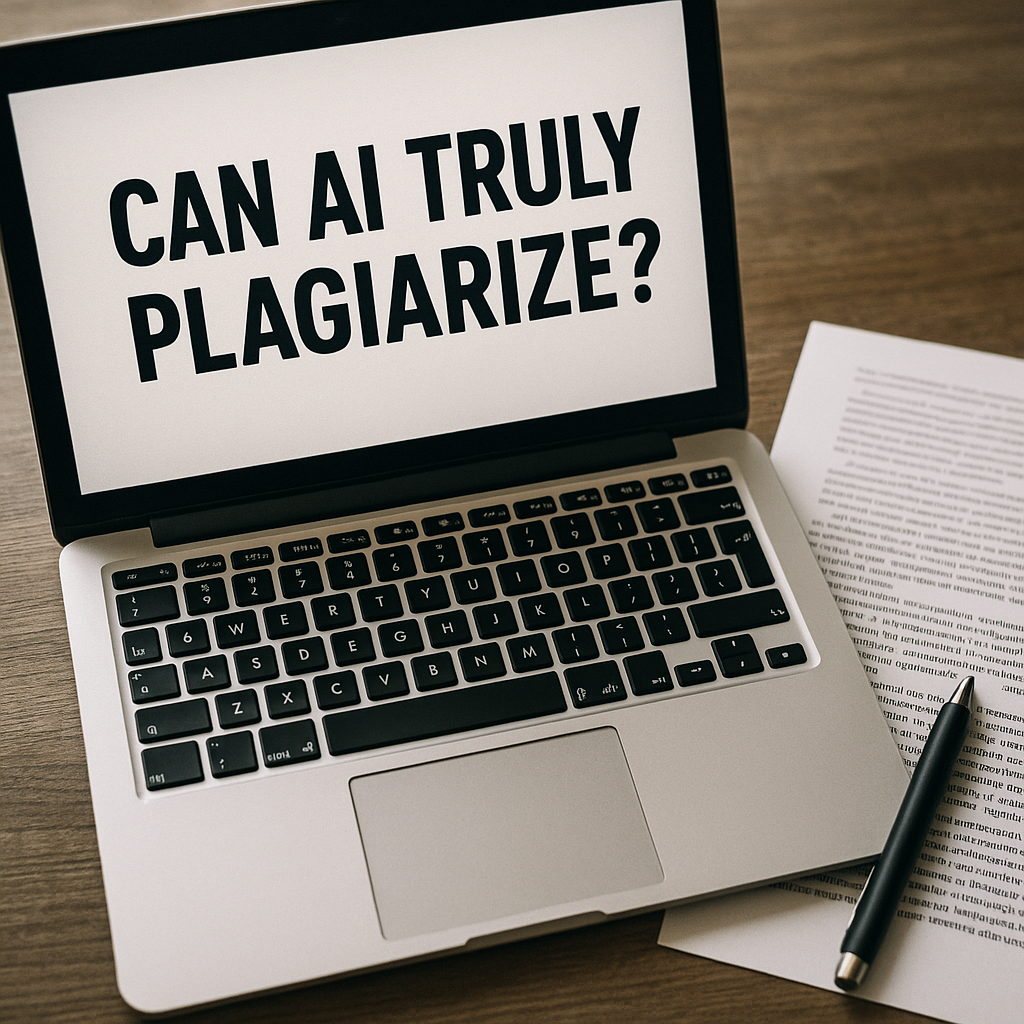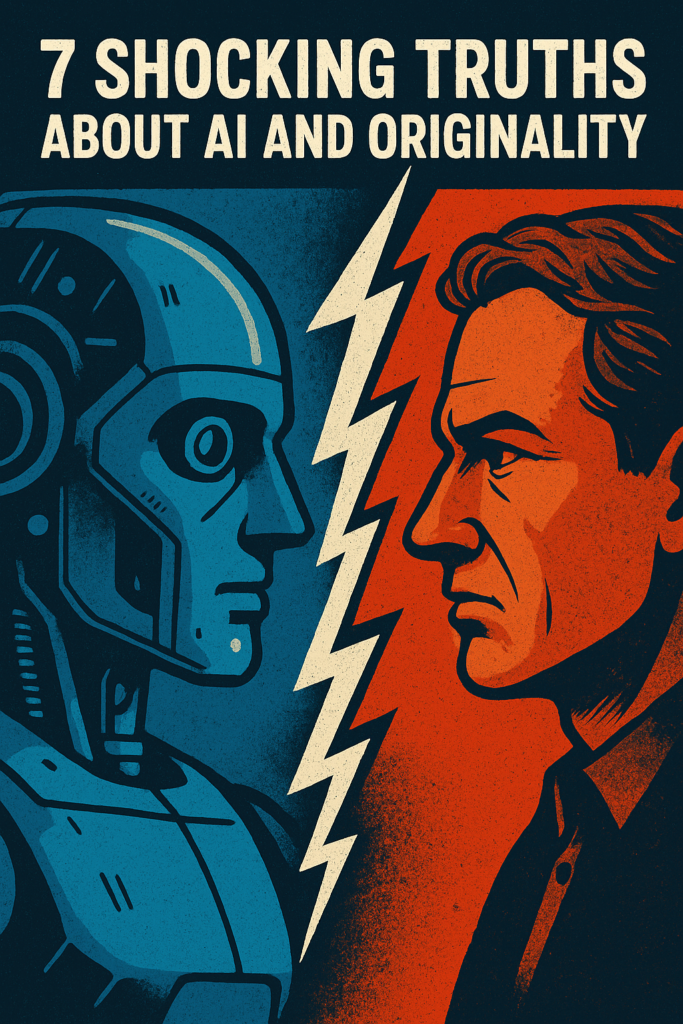Physical Address
304 North Cardinal St.
Dorchester Center, MA 02124
Physical Address
304 North Cardinal St.
Dorchester Center, MA 02124

AI content generators are changing the way we create blogs, articles, and even marketing copy. These tools are fast, efficient, and often surprisingly creative. But as more people turn to AI for writing help, one big question comes up—are these tools truly original, or can AI plagiarize?
Before we dive into that, let’s first understand what AI content generators actually are. In simple terms, these tools use artificial intelligence to write content based on the prompts you give. They don’t think like humans, but they can produce human-like writing by predicting words and sentences based on patterns in the data they’ve been trained on.
Now, here’s the important part: with all the benefits of speed and convenience, there’s growing concern around originality. If an AI tool pulls ideas from massive amounts of existing content, how do we know it’s not just copying? This blog will explore whether AI content generators can plagiarize and how you can protect your content’s originality.

AI content generators are tools that use artificial intelligence to write text automatically. You simply give them a topic or prompt, and they generate content within seconds. These tools are designed to help bloggers, marketers, and business owners create articles, social media posts, product descriptions, and more—without writing everything from scratch.
Some popular examples include ChatGPT, Jasper, and Copy.ai. Each tool offers different features, but they all work in a similar way—by predicting the next word in a sentence based on what’s already written.
So how does this really work? AI content generators use something called predictive language models. These models are trained on huge amounts of text data—books, websites, blogs, and more. The AI learns patterns in language and uses those patterns to create new content that sounds human.
Now, let’s talk about AI vs. human writing. While humans write using creativity, emotions, and real-world experience, AI follows patterns. It doesn’t “understand” what it’s writing—it just puts words together in a way that seems natural based on its training. This is where the debate of AI vs. human brain comes in. The human brain creates with purpose; AI creates with patterns.
In short, AI content generators are powerful tools. But knowing how they work helps us understand their limits—and how to use them wisely.
When using AI content generators, it’s important to understand how they create text. Unlike humans, AI doesn’t copy and paste from the internet. Instead, it predicts the next word in a sentence based on patterns it has learned from a large amount of data. This means the content it produces is new, but it’s built from existing information.
So, is this content truly original? That depends on how you define originality. AI doesn’t have thoughts, feelings, or opinions. It doesn’t create with intent. It simply follows the patterns in its training data. In some cases, the output may sound generic or similar to existing content—but it’s not a direct copy.
This brings us to the debate of AI vs. human writing. A human writer brings creativity, personal experience, and emotion into the writing process. Humans make choices based on context, tone, and meaning. On the other hand, AI follows rules and patterns without any understanding of what it’s writing. This is where AI vs. human brain becomes an interesting comparison. The human brain thinks and feels; AI just calculates and predicts.
In short, AI content generators are great for producing quick drafts and ideas, but they lack the depth that comes from real human thinking. That’s why reviewing and editing AI-generated content is key to making it truly original and meaningful.

One of the biggest concerns about AI content generators is whether they can plagiarize. The short answer? AI plagiarism is possible, but it usually happens without intent. That’s because AI doesn’t think or plan like a human—it simply predicts text based on patterns in the data it was trained on.
Sometimes, this leads to unintentional plagiarism. For example, if the AI has seen certain phrases many times in its training data, it might repeat them without knowing they belong to someone else. This isn’t the same as a person copying on purpose, but it can still raise red flags—especially if you’re using the content for business, school, or publishing.
It’s also helpful to understand the difference between duplication, paraphrasing, and true plagiarism:
Now, how do AI content generators try to avoid copying exact content? Most advanced tools are designed to create unique text. They use algorithms to predict new combinations of words rather than pulling full sentences from existing sources. Some tools even have built-in checks to reduce repetition and increase originality.
Still, AI vs human writing makes a difference. A human knows when they’re borrowing someone else’s idea and can give credit. AI doesn’t know the difference—it just follows data. That’s why it’s important to always check AI-generated content for originality before publishing it.
In the end, AI can help you write faster—but you’re still responsible for making sure your content is ethical and unique.
If you’re using AI content generators for writing, it’s important to know how they really work behind the scenes. Many people assume AI always creates original content—but that’s not always the case. Here are 7 shocking truths about AI and originality that every content creator should know.

AI tools work by following patterns. So, if two people give the same prompt, the tool may create content that sounds very similar. That’s because it’s using the same logic to predict the next words.
AI content generators are trained on huge public datasets—books, blogs, articles, and more. If a certain phrase appears often in that data, there’s a chance the AI might repeat it. That doesn’t mean it’s copying, but it could lead to less originality.
Unlike humans, AI doesn’t write with purpose or understanding. It doesn’t try to plagiarize—but it can still create content that echoes what it has seen before. This is a key point in the AI vs. human brain debate: humans write with meaning, AI writes with patterns.
Some AI content generators include built-in tools to help avoid duplicate content—but not all of them do. If your tool doesn’t check for originality, you might end up publishing something that sounds too familiar.
Traditional plagiarism checkers are made to detect exact matches. But AI-generated content might paraphrase or rearrange ideas, which makes it harder to catch. That’s why using AI-specific checkers like Originality.ai can help.
AI can be directed to imitate a certain style or voice. If someone tries to mimic another writer or brand too closely, the output might cross the line—especially if the goal is to copy someone else’s work.
Even the best AI content generators don’t replace human creativity. You still need to review, edit, and add your own voice. This is where AI vs human writing becomes clear: AI can help, but humans make the message personal, emotional, and truly original.
Understanding these truths can help you use AI wisely—and stay on the right side of originality and ethics.
Using AI content generators is fast and easy—but making sure the content is original is just as important. Even though AI doesn’t copy on purpose, it can still produce text that sounds too close to what already exists online. That’s why checking for originality is a must.
Some of the best tools to check for plagiarism are already popular:
These tools are great for spotting direct duplication, but they may not catch subtle AI-generated patterns.
Since AI content generators create new text based on patterns, you’ll want tools made for detecting AI-style writing:
These tools are perfect for anyone concerned about AI vs. human writing and want to make sure their content is unique.

Using AI content generators can save time, but originality still matters. If you want to avoid AI plagiarism and stand out online, here are simple tips to make sure your content stays fresh, personal, and truly yours.
The more detailed your prompt, the more unique the output. Instead of saying, “Write a blog about marketing,” try “Write a friendly blog post for small businesses about email marketing tips in 2025.” This helps AI content generators create content that’s different from what others are generating. It also makes your writing feel more personal.
Think of AI as your writing assistant—not the main author. Let the AI handle the rough draft or outline, and then jump in to shape the final version. When it comes to AI vs human writing, humans bring emotion, experience, and personal tone—things AI still can’t replicate well.
Even the best AI content generators can include errors or generic phrases. That’s why human editing is key. Read everything yourself. Check the facts. Make the language fit your brand or voice.
Editing by hand also reduces the risk of AI plagiarism. You’ll catch anything that sounds too similar to existing sources and can reword it in your own style.
AI content generators don’t intentionally plagiarize, but they can sometimes create content that closely resembles existing text. This happens because they are trained on large public datasets and generate new content by predicting word patterns—not copying. Always check AI-generated content with plagiarism tools to be safe.
Yes, in most cases, AI-generated content is technically original because it doesn’t pull directly from one source. However, without human editing, it might lack uniqueness or contain familiar phrases, especially if the prompts are generic.
To avoid AI plagiarism:
AI writing is based on pattern prediction using massive datasets. It’s fast and efficient but lacks emotion, context, and creativity. Human writing comes from thought, experience, and intent. That’s the key difference in the AI vs. human brain debate.
Yes. Tools like GPTZero and Originality.ai are made to detect if text is written by AI. These tools are useful for educators, editors, and content creators who want to ensure originality.
AI content generators have transformed how we create online content. They’re fast, efficient, and a great starting point for blogs, emails, product pages, and more. But even with advanced tools, content originality remains a top priority.
While AI doesn’t plagiarize intentionally, it may sometimes produce text that resembles existing content—especially if the prompts are vague or too broad. That’s why knowing the difference between AI vs. human writing is essential.
To stay original and avoid AI plagiarism, treat AI as your assistant, not your replacement. Always edit your content, personalize the message, and fact-check important details.
At Iceberg AI Content, we believe in combining AI speed with human creativity to deliver unique, high-quality writing. Use the tools wisely, and your content will not only rank—but also resonate.